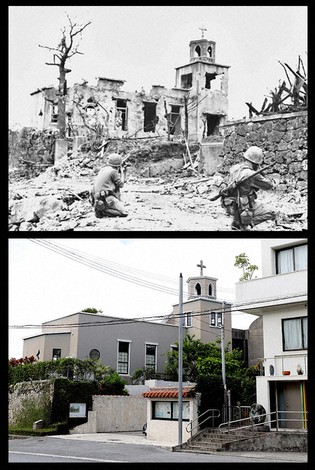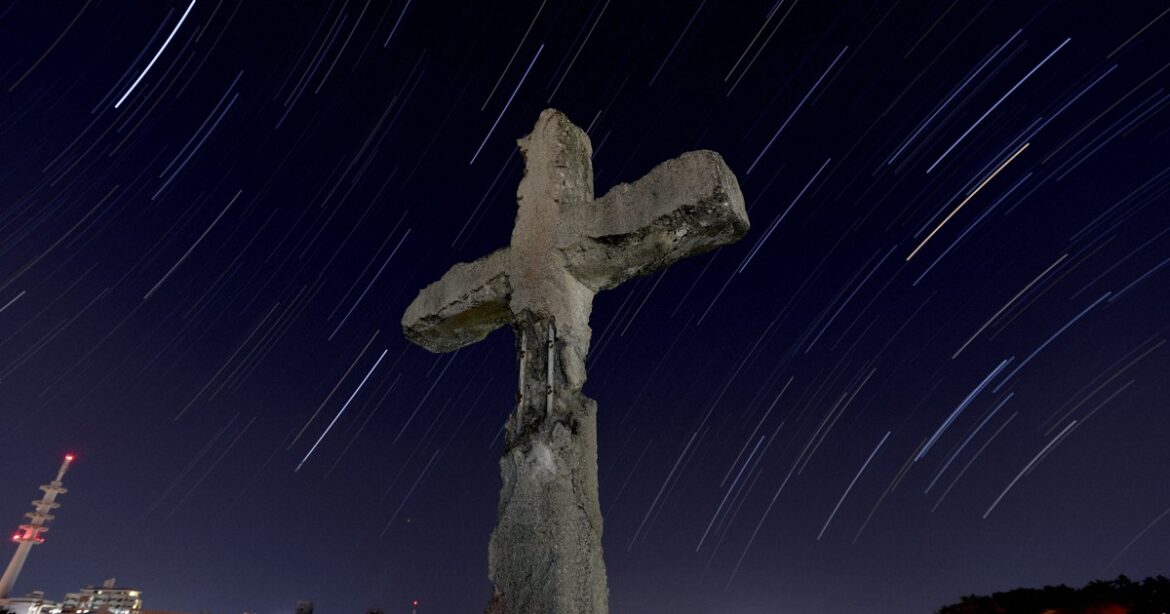NAHA — In April 1945, U.S. troops landed in the central part of Okinawa’s main island and continued their advance southward, approaching Shuri (present-day Naha), the headquarters of the Imperial Japanese Army’s 32nd Army, by mid-May. Once the flourishing center of the Ryukyu Kingdom, the ancient city was exposed to intense attacks from U.S. forces.
The U.S. military’s war history states that an estimated 200,000 artillery shells were fired into Shuri, and 450 tons of bombs were dropped during countless air raids, while thousands of mortar rounds arched down onto Shuri.

Top: A photo taken in 1945 by the U.S. military, now kept by the Okinawa Prefectural Archives, shows Shuri Church. Bottom: The old chapel of Shuri Church, restored in 2017, is pictured in the city of Naha in May 2025. (Mainichi/Shinnosuke Kyan)=Click/tap photo for more images.
The town was reduced to ruins, and only the concrete structures of Shuri Church and Okinawa Prefectural Daiichi Junior High School retained their original form.
Having already lost the majority of their forces, the Japanese military was pressured with a decision: to engage in a decisive battle at Shuri or to retreat and continue a battle of endurance. The commanding general, Mitsuru Ushijima, decided on May 22, 1945, to withdraw to the southern part of the island.
The aim was to draw U.S. forces to Okinawa for as long as possible to delay their invasion of mainland Japan. On May 27, the commander and others left the underground bunker of Shuri Castle and arrived at a bunker in Mabuni (present-day Itoman) on May 30.
After this, the southern part of the island became a battlefield where Japanese troops and evacuees were intermingled. People fled in confusion, and the number of casualties continued to rise.
(Japanese original by Shinnosuke Kyan, Kyushu Photo and Video Department)

In Photos: Restored cross of Shuri Church in Okinawa conveys intensity of WWII battle


AloJapan.com